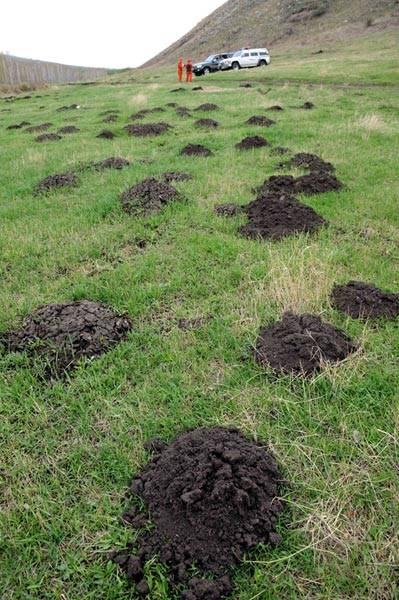Burrowing rats ruin pastures in Inner Mongolia
About 700 rats within an area the size of a football field - that is what herdsmen of the most serious rat-stricken area in North China's Inner Mongolia autonomous region are facing.
Since early May, all the 12 leagues (the name for prefectures in the Inner Mongolia region) have been hit by burrowing rats, with most of the pasture areas being severely afflicted.
"We cannot even ride horses on the plain because horses are easily tripped by the rat holes," said Suya Latu, a local resident.
By Tuesday, the regional government has put out 1,024 tons of poisonous bait to kill the rats, according to official figures.
But only 18.8 million mu of the 98.2 million mu rat-stricken areas have been cleared.
"The continuous drought in the past few years has resulted in grassland degradation. Hence microtus brandti, a kind of field mouse, grew sharply in number," said Qiao Feng, an expert with the grassland working station of the autonomous region.
Statistics of the Hulunbuir league also show that the rat problem has been increasing since 2008.
Besides eating grass, the field mice dig countless holes on the plain, worsening grassland desertification.
Grassland in the Inner Mongolia autonomous region has more than 50 kinds of mice, experts said. And microtus brandti is among the top dangerous species to grassland.
However, grassland degradation caused by overgrazing is probably the major cause of the rat problem, as rats can only survive in spare grassland instead of tall grass, said Han Chongxuan, a professor with the Northwest A&F University.
The existence of rats and grassland degradation is a vicious circle, meaning one leads to the other continuously, he said.
From the late 1950s, the desertification increased 1,560 square kilometers a year. Between the 1970s and 1980s, the speed rose to 2,100 square kilometers a year. And the grassland region in North China was especially devastated, according to previous media reports.
Also, the rats can thank the increasing pollution for their proliferation.
"Twenty years ago, there were far more foxes, eagles and snakes here. But now the rats have nothing to fear," said Suya Latu.
Local government officials also said they are running short of funds to solve the rat problem. According to the official People's Daily, only 20 percent of rat-hit areas can be addressed every year.
Siqin Batu, the deputy director of the agriculture bureau of the Urad Front banner (an area that is equivalent to a county), said that they only managed to address rat prevention in limited areas, and this year's problem seemed like "a firestorm of a residual problem in previous years".
 0
0 








Go to Forum >>0 Comments